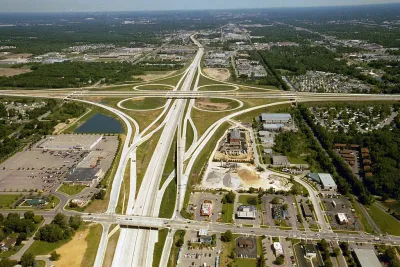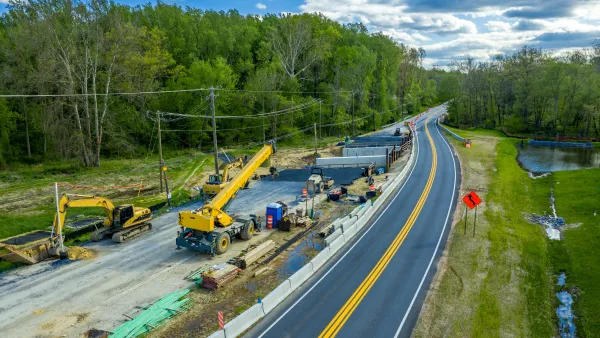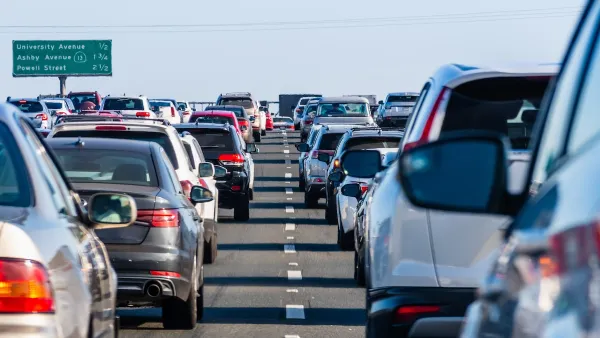One writer calls on the state to stop expanding roads and channel funding to projects that support Michigan’s sustainability goals.

In an opinion piece in Bridge Michigan, Robert Goodspeed calls on the state of Michigan to rethink its transportation spending and shift focus away from expanding freeways and roads that contribute to carbon emissions and induce more driving and congestion. Goodspeed asks, “Why do we need these if the state population has been flat for 20 years, and highways run counter to our state’s sustainability goals?”
“Right now, MDOT is spending $1.3 billion on the I-75 modernization project which will add additional commuting lanes, and a reported $269 million on a project to add a ‘flex’ lane to a 12-mile segment of I-96 in Oakland County. The $3 billion reconstruction of I-94 in downtown Detroit is also adding a lane and incurring the costs of wider bridges to accommodate it.” As Goodspeed notes, “Although some of the big freeway projects also include necessary rehabilitations, a big part of their cost are additional lanes and interchanges to make traffic flow a bit smoother.”
Goodspeed pushes back against common arguments for road expansion, writing, “In the longer term, they encourage sprawling development that empties out existing communities and gobbles up precious farmland and wilderness. One study found road improvements resulted in 20 percent more traffic.”
The op-ed ends with a strong call to action. “Gov. Gretchen Whitmer’s MI Healthy Climate Plan calls for carbon neutrality by 2050. To act on it, her administration should immediately cancel all road widening projects and modernizations resulting in more lane miles (including HOV and Flex lanes), including the capacity enhancing features I-23, I-96, and I-75 projects. Doing so would unlock millions which can be used to address the maintenance needs of existing roads and free up funds for transit alternatives.”
FULL STORY: Stop expanding the damn roads and rethink MI’s transportation future

National Parks Layoffs Will Cause Communities to Lose Billions
Thousands of essential park workers were laid off this week, just before the busy spring break season.

Retro-silient?: America’s First “Eco-burb,” The Woodlands Turns 50
A master-planned community north of Houston offers lessons on green infrastructure and resilient design, but falls short of its founder’s lofty affordability and walkability goals.

Delivering for America Plan Will Downgrade Mail Service in at Least 49.5 Percent of Zip Codes
Republican and Democrat lawmakers criticize the plan for its disproportionate negative impact on rural communities.

Test News Post 1
This is a summary

Test News Headline 46
Test for the image on the front page.

Balancing Bombs and Butterflies: How the National Guard Protects a Rare Species
The National Guard at Fort Indiantown Gap uses GIS technology and land management strategies to balance military training with conservation efforts, ensuring the survival of the rare eastern regal fritillary butterfly.
Urban Design for Planners 1: Software Tools
This six-course series explores essential urban design concepts using open source software and equips planners with the tools they need to participate fully in the urban design process.
Planning for Universal Design
Learn the tools for implementing Universal Design in planning regulations.
EMC Planning Group, Inc.
Planetizen
Planetizen
Mpact (formerly Rail~Volution)
Great Falls Development Authority, Inc.
HUDs Office of Policy Development and Research
NYU Wagner Graduate School of Public Service





























